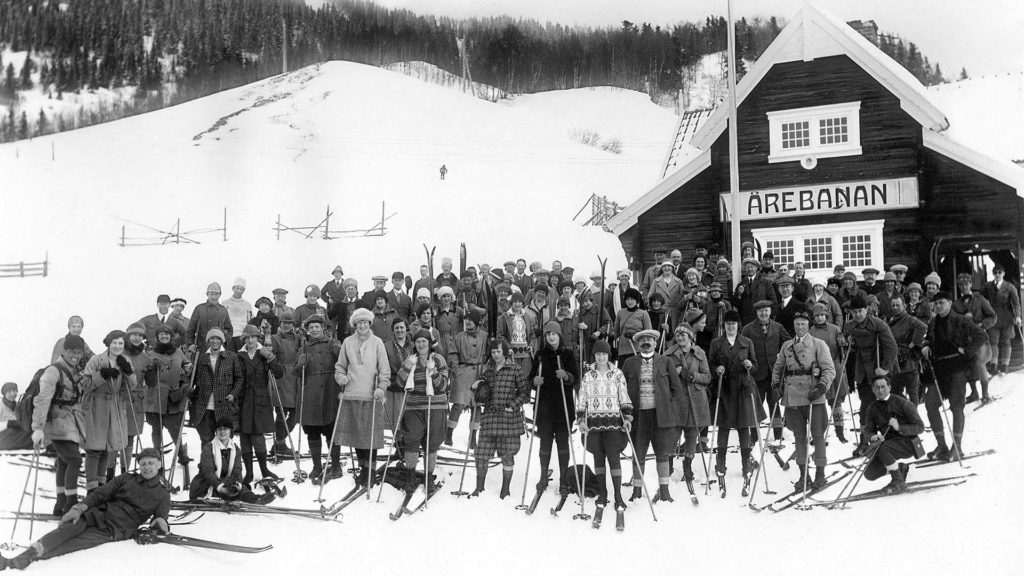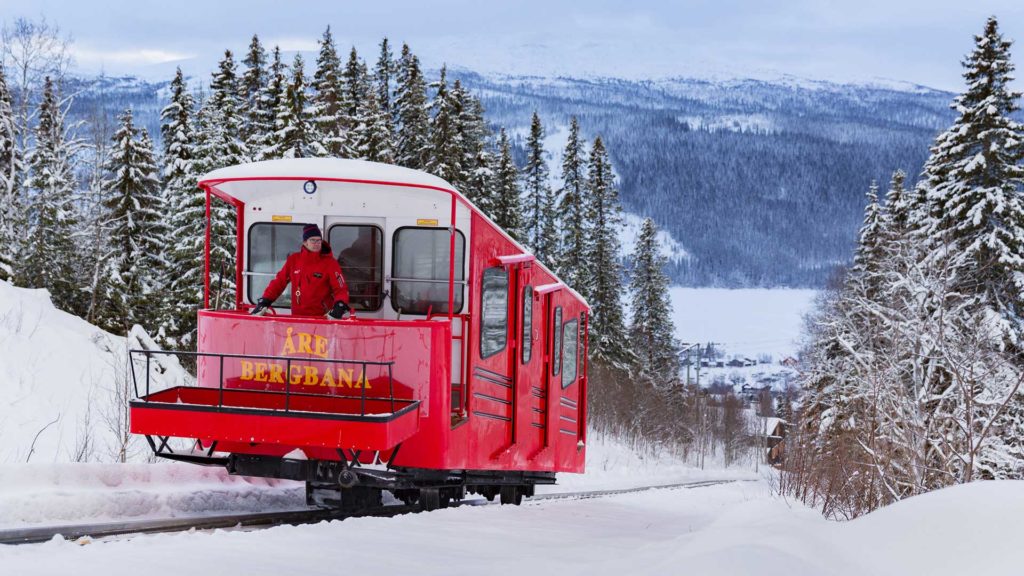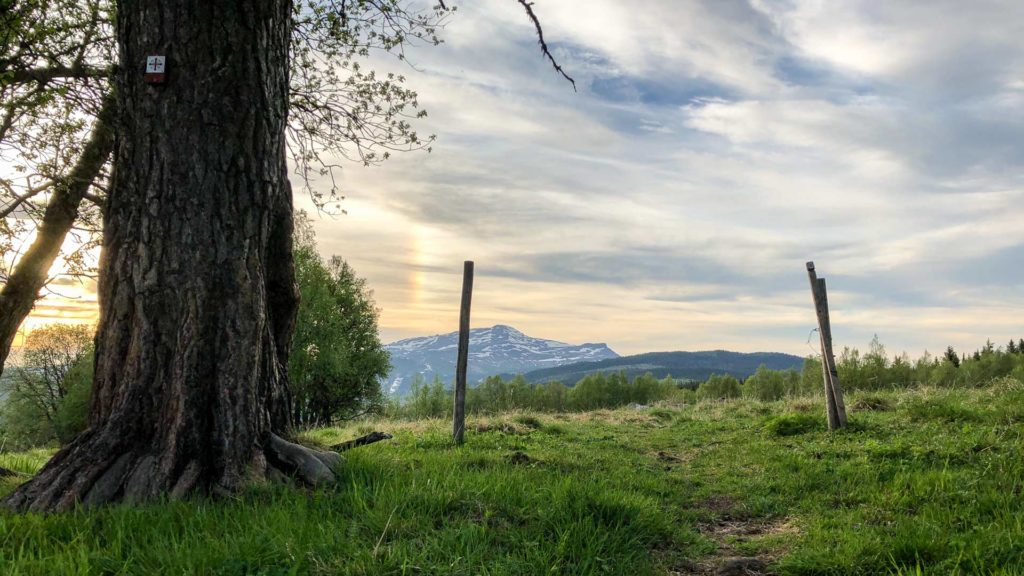Åres historia
The history of Åre
Today’s Åre is best known for its slopes and the big city pulse that pumps during the winter season. But, the history of Åre as a tourist destination is nothing new. During the 12th century, thousands of pilgrims from all over Europe stayed in the village during their trek to St. Olav’s tomb in Nidaros, now known as Trondheim.
Åre as a destination for tourists grew during the latter part of the 19th century. Åre then began to transform from a farming village into an international tourist destination. Before that, the valley was made up of agriculture combined with hunting and fishing and the old church dates back to the early 13th century.
It was the high and clean air that attracted the early guests, often called “air guests” visiting the area to benefit from the clean and fresh air. Hunting and fishing also played an important role, as evidenced by the hunting villas built from about 1880-1915, such as Skalstugan and Rensjösätern. From the beginning, summer tourism was the largest and up to the early 1970s Åre was visited by as many people during the summer as in the winter.
Follow the history of Åre at the Åre Museum in the Bergbana Station, which is always open as long as the Bergbanan (funicular) is running.
Discover Åre Through the Ages
HUSESYN | MORRVIKJA | SKISTAR’S GUIDE
Discover Åre through the ages – from an industrial village to the internationally renowned ski resort it is today. Morrvikja offers guided historical walks, where Maria Wilhelmsson brings history to life with stories about the people who lived here and the houses they built and called home. Prefer to go at your own pace? Then follow the shorter or longer version of the Husesyn history trail, which takes you past Åre’s historic buildings.
For a slightly tougher hike, take trail 214 up (or down!) Åreskutan, made even more enjoyable with SkiStar’s digital guide in your ears – your companion through the mountain’s fascinating past. Another option is to follow in the footsteps of the pilgrims and learn more about the Caroleans’ fateful march across the mountains. Find out more here.
Mile stones in Åre history
1882 The railway is inaugurated by King Oscar I. In connection with this, the first “air guests” visit Åre. The name “air guests” derives from guests suffering from respiratory disorders in need of high altitudes and clean air.
1888 Stinsen Albin Wettergren starts Åre Jernvegsrestaurang in connection with the railway station.
1891 Åre Tourist Information Centre opens. The theme for the first ad campaign will be “For Tourists and Health guests in Åre’s Climatic Health Resort”.
1892 The Swedish Tourist Association builds the first cabin on the top of Mt. Åreskutan, still Sweden’s highest cafe.
1895 The first major tourist hotel, Hotell Åreskutan, is opened by Kristina Hansson, later to be renamed Hotel Åregården.
1897 Next major hotel is being built, Grand Hotel, currently known as the Hotel Diplomat.
1902 Åre Ski Club is formed.
1910 Åre Bergbana (funicular) opens. Åre’s first transport up the mountain was built during the years 1908-1910 for the cost of SEK 230,000 and was inaugurated in 1910. Åre Fjällstuga at Bergbanan’s top station is inaugurated (now Hotell Fjällgården). Work to develop Åre into an alpine winter sport destination with tobogganing and skiing is now up and running.
1912 New Grand Hotel inaugurated (now known as Sporthotellet).
1919 The first downhill race is arranged in a 5,200m long hill – Årebragden.
1935 Åre Slalomklubb, the local ski racing club is formed.
1939 Åre’s first tow lift is built close to the current World Cup Arena and the tiny yellow lift cabin still remains.
1952 The first cable car was built. The stretch was from Hotell Fjällgården to Hummeln in two stages, a total of 960m in length with 327m in height. Passengers were transported standing up in blue “cup-like” gondolas, one of which is today lined up in Åre Square in front the Bergbana.
1954 Åre hosts the Alpine World Championships. Ladies and men’s, downhill race, big slalom, slalom and combination. Åre’s own Sara Thomasson wins third place in slalom.
1966 Duved’s first chairlift (Linbanan) is inaugurated and Duved’s ski area gradually expands.
1969 Åre hosts for the first time an Alpine World Cup, the first of many in the coming years.
1976 Åre Kabinbana (cable car) opens at a cost of SEK 73 million, opening up the high zone for skiing.
1981 Snow cannons are installed in Åre and the first lift in Björnen is built, followed by other investments in the area.
1984 The Downhill Race slope (Störtloppet) and the lift Olympia (now exchanged for the VM8:an) are built.
1986 The first lift in Tegefjäll is built followed by other investments in the area.
1989 The Olympia gondola is inaugurated by King Carl XVI Gustav and Queen Silvia.
1995 New toboggan track with old ancestry, opens (the toboggan runs between Fjällgården and Åre Square).
1996 Lighting is erected in the Gästrappet slope, opening up evening skiing.
1998 Duved’s chairlift, with six-chair construction and windproof Plexiglas hoods is constructed.
1999 Åre hosts the Mountain Bike World Cup. To this day, Åre’s largest competition event and a great success.
2002 The decision to host the 2007 Alpine World Championships is made. A six-chair lift replaces the two lifts; Stjärnliften and Fjällgårdliften and a new four-chair lift in Hummeln is built.
2004 Children’s Theme Land in Björnen and Tegefjäll is built. Holiday Club is inaugurated.
2005 The competition arena for the 2007 Alpine World Championships will be completed during the autumn, a road tunnel replaces the bridge over the E14 in the Olympia area.
2006 The new Stationshuset (Train Station) is inaugurated, housing the Åre Tourist Information Centre. The Olympia chairlift is replaced with the world’s first Telemix lift and consists of 64 chairs and 16 gondolas with seating for eight people in each chair or gondola.
2007 Åre hosts the Alpine World Ski Championship for the second time.
2010 Åre celebrates 100 years as a winter sports resort and 100 years since Åre Bergbana (funicular) was built and inaugurated.
2013 3 new chairlifts are inaugurated in December. A 6-chair lift with hoods and sun heat in Björnen (Sadellexpressen), a 6-chair lift from Fjällgården and up on Sadeln (Fjällgårdsexpressen), and a 4-chair lift in Tegefjäll (Tegellift) which replaces the tow lift (Tegefjälllift). This is one of the largest investments in lifts ever made in Åre.
2014 Record Summer for both the weather and visitors! In June, the decision was made that Åre will once again host an Alpine World Championship in 2019. Åre showed what it’s made of while hosting the Alpine World Cup with only 2 weeks’ notice due to a severe lack of snow in the French Val d’Isère and Courchevel.
2019 Åre hosts its third Alpine World Championship, a record-breaking event for Åre village with a brilliant effort from all the volunteers who shovelled freshly fallen snow in and around the competition slopes. Medals and achievements were celebrated festively in Åre Park and the forgotten sport Skijoring was resurrected in Åre Square.
Last updated 22 August 2025


